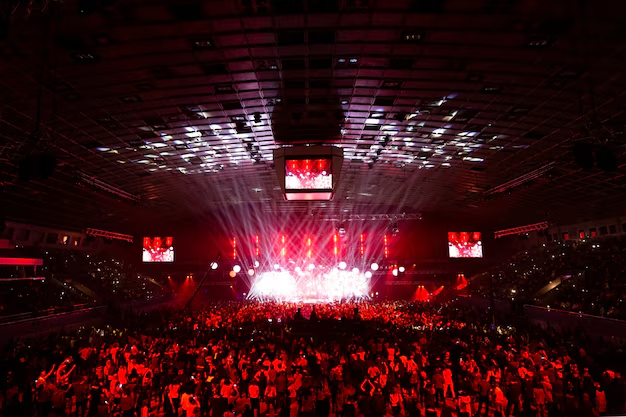Behind the Curtain: Exploring the Hidden World of Stage Productions and Their Unseen Magic
The world of stage productions is often viewed through a lens of dazzling lights, larger-than-life performances, and breathtaking sets. The audience, however, rarely sees the intricate behind-the-scenes work that goes into bringing a live production to life. The magic of theater lies not only in the performances but in the unseen world that happens behind the curtain—where collaboration, skill, and creativity come together to create an unforgettable experience.
The Unsung Heroes: Behind the Scenes Crew
Stage productions are a massive collaborative effort, with numerous talented individuals working tirelessly to make sure everything runs smoothly. While the actors and directors are often the faces of a production, the real work happens offstage. The technical crew—including lighting designers, sound engineers, stagehands, costume designers, and set builders—are the invisible force that ensures everything goes according to plan.
- Lighting and Sound Design: Lighting designers create the ambiance, setting the mood and enhancing emotions through the clever use of color, shadows, and intensity. Similarly, sound engineers control everything from background music to sound effects, ensuring that every cue is in harmony with the onstage action. These elements are crucial for amplifying the impact of a performance.
- Costume and Set Design: A production’s visual identity is largely shaped by its set and costumes. Set designers build the environments in which actors perform, making sure the stage is transformed into a world that matches the story. Costumes are more than just clothing; they help define characters, set the time period, and enhance the audience’s understanding of the narrative.
- Stagehands and Technicians: Stagehands are the unseen wizards who work in the shadows, literally. They manage everything from set changes between scenes to moving props and managing technical equipment. The fast-paced, often chaotic work requires precision and a deep understanding of timing, as even the smallest misstep can disrupt the flow of the performance.
Rehearsals: The Calm Before the Storm
A stage production may run for a few weeks or months, but the preparation begins long before opening night. Rehearsals are the foundation of any great performance, where the actors and crew work together to synchronize their efforts. Every line, every movement, and every piece of equipment is meticulously planned and rehearsed to perfection.
Actors spend countless hours learning their lines and blocking, while directors focus on refining the performance and ensuring that the production’s vision comes together cohesively. During these rehearsals, the technical crew also works closely with the cast to ensure that lighting, sound, and set changes occur seamlessly.
However, rehearsals are not just about memorizing lines. They’re a time for problem-solving. For instance, a scene that works well in theory might not translate on stage as smoothly as expected. This is where the real magic happens—tuning the production to fit the live, dynamic environment of the theater.
The Challenge of Live Performance
Unlike film, which can be edited and reshot, live theater is an unforgiving medium. The slightest mistake, whether from an actor, a technical crew member, or a prop malfunction, can disrupt the performance. However, it’s in these moments of unpredictability that theater truly shines. Actors and crew must think on their feet, adapting to unforeseen circumstances and ensuring the show goes on. This sense of immediacy and unpredictability is part of what makes live theater so exciting for both performers and the audience.
The Role of the Audience
The audience’s energy is an essential part of any stage production. Actors often feed off the reactions of the crowd, adjusting their performance based on the energy they receive. Applause, laughter, or even a hushed silence can significantly impact the direction of a performance. This interaction between the stage and the audience is unique to live theater and adds a layer of magic that no other form of entertainment can replicate.
The Unseen Stress and High Stakes
For all its glamour, stage productions can be extremely stressful. The pressure to perform flawlessly in front of a live audience is immense. Performers and crew members must deal with the stress of last-minute changes, technical difficulties, and the weight of an entire production’s success resting on their shoulders. The stakes are high because once the curtain rises, there’s no turning back.
Despite the stress, many performers find a sense of fulfillment in these challenges. There’s something thrilling about the unpredictable nature of live theater. The stakes, the camaraderie among the crew, and the feedback from the audience create an atmosphere that feels like no other.
FAQs About Stage Productions
- What is the role of a stage manager? A stage manager coordinates the entire production behind the scenes, ensuring everything runs smoothly. They handle rehearsals, timing, communication with the cast and crew, and make sure all cues are followed correctly during the performance.
- How long does it take to prepare for a stage production? Preparation can take anywhere from a few weeks to several months, depending on the scale of the production. Large-scale productions often begin rehearsals months in advance, while smaller productions might take less time to prepare.
- What happens if there’s a mistake during a live performance? Actors and crew members are trained to handle mistakes gracefully. Sometimes, they may improvise to cover up errors, and the audience often doesn’t even notice. The show must go on, and part of the magic is in overcoming these challenges.
- How are set changes managed during a performance? Stagehands work quickly and efficiently to change the set between scenes, often in complete darkness or while actors are performing on stage. The timing of these changes is crucial for the success of the production.
- Are there rehearsals with the full cast before opening night? Yes, before the opening night, there are full rehearsals with the entire cast and crew, often called “dress rehearsals,” where everything is run as if it were a real performance.
- What is the role of the director in a stage production? The director oversees the entire production, working with the actors to shape their performances, collaborating with the design team, and making final decisions on the creative direction of the show.
- Why is theater considered a unique art form? Theater is unique because of its live, collaborative nature. The experience is always different because of the interaction between the actors, the crew, and the audience, creating a one-of-a-kind event each night.
Conclusion
Stage productions are a testament to the power of collaboration, creativity, and hard work. The magic that unfolds on stage is only possible through the tireless efforts of the crew and the dedication of the actors. The unseen world behind the curtain is just as important as what happens in front of the audience. From technical aspects like lighting and sound design to the careful choreography of set changes, every element plays a pivotal role in creating an immersive and unforgettable experience.
Key Takeaway
The true magic of stage productions lies not only in the performances but in the unseen artistry and teamwork behind the scenes. Every show is a testament to the power of collaboration, where technical expertise, creativity, and hard work combine to create an experience that can never be replicated.

